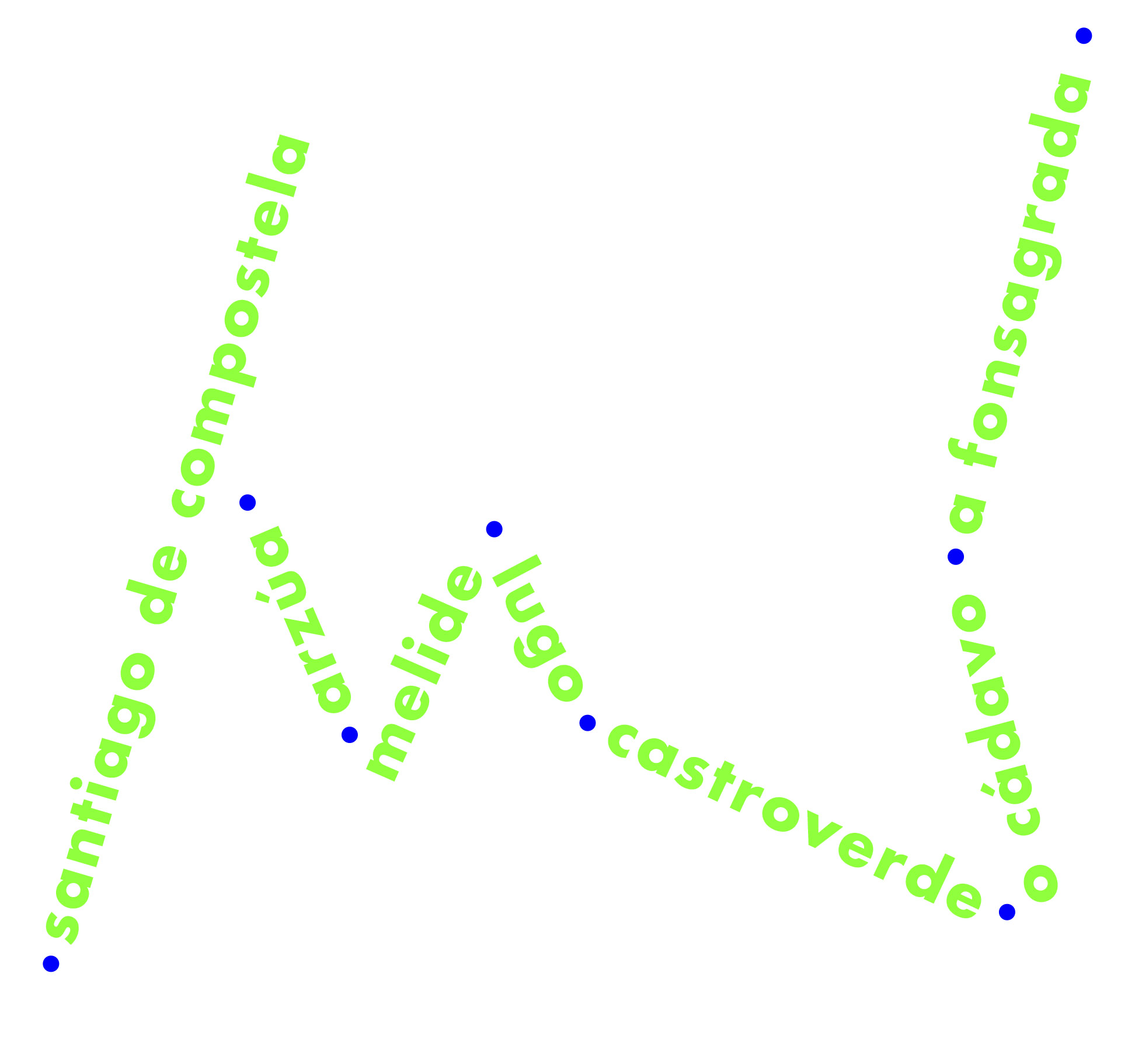the primitive way
This is the oldest of the multiple ways to Santiago de Compostela, first traced by Alphonse II the Chaste, King of Asturias and Galicia. Around the year 830, he travelled with his entourage from Oviedo, following an ancient mountain road to the site where the tomb of Saint James the Greater had been discovered.
In Galicia it was known as the Oviedo Way, but in order to highlight its centuries-old tradition, following its restoration in the 1990s the name was somewhat inappropriately changed to the previously unused PRIMITIVE WAY.
Covering 308 km, half in Asturias and half in Galicia, the significance of the Primitive Way lies in the fact that it links two of the greatest temples of worship housing medieval relics in northern Spain.
Following the move of the capital of the kingdom to León, the growing influence of the French Way and the later appearance of the coastal routes, this way was gradually abandoned by the majority of pilgrims, discouraged by the long and arduous trek over solitary mountain ranges covered with forests inhabited by bears and wolves.
 Delibes said that men are made, but the mountains are already there. Standing before them is a humbling experience, but one which also helps you to grow and build character.
Delibes said that men are made, but the mountains are already there. Standing before them is a humbling experience, but one which also helps you to grow and build character.
The current way retains all its former character, and is undoubtedly the ideal option for anyone seeking close contact with nature in magnificent country settings, and eager to venture along ancient paths through dense woods – most of which are in Asturias, not Galicia – which for the sake of convenience and accessibility have been turned into forest tracks.
In 2015, UNESCO included it on the World Heritage list, together with other northern routes.
Although this is a challenging route that does not suit all walkers – between Oviedo and Castroverde there is a succession of no fewer than seven mountain passes, the longest of which is the Palo Pass, just after the village of Pola de Allande. In 2019, it was the sixth most popular way, practically on a par with the English Way, accounting for 4.5% of all pilgrims. In turn, 2.7% of pilgrims choose Oviedo as their point of departure.
As for its built heritage, two major cities are included on this route: Oviedo, capital of the ancient kingdom and home to a magnificent cathedral and historic quarter, and Lugo, which also has a cathedral and a superb Roman Wall, declared a UNESCO World Heritage site. Salas is another town boasting a rich heritage.
 Yet the saying goes that the fearful should never venture into the forest, and it is worth remembering that this Way is full of mountains and woods that are not for the faint-hearted.
Yet the saying goes that the fearful should never venture into the forest, and it is worth remembering that this Way is full of mountains and woods that are not for the faint-hearted.
Despite the steady rise in accommodation options in recent years, in Asturias there is still a lack of amenities in the high season. There are more facilities available in Galicia.
The origins and nature of the Primitive Way clash with the attempts of Lugo City Council in 2020 to convert it into an excursion of some 100 km departing from the city. A route that is completely lacking in value and meaning, as it fails to include the city of Oviedo and the mountains of Asturias and Galicia, reducing it to a mere excursion around the region known as Terra Chá, before hurriedly joining up with the French Way in Melide.
Completing the Primitive Way from Oviedo will take between 12 and 14 days, although pilgrims are advised to add a further three in order to explore the cities of Oviedo, Lugo and Santiago. This way can therefore be classified as a medium distance route that will take approximately half a month.
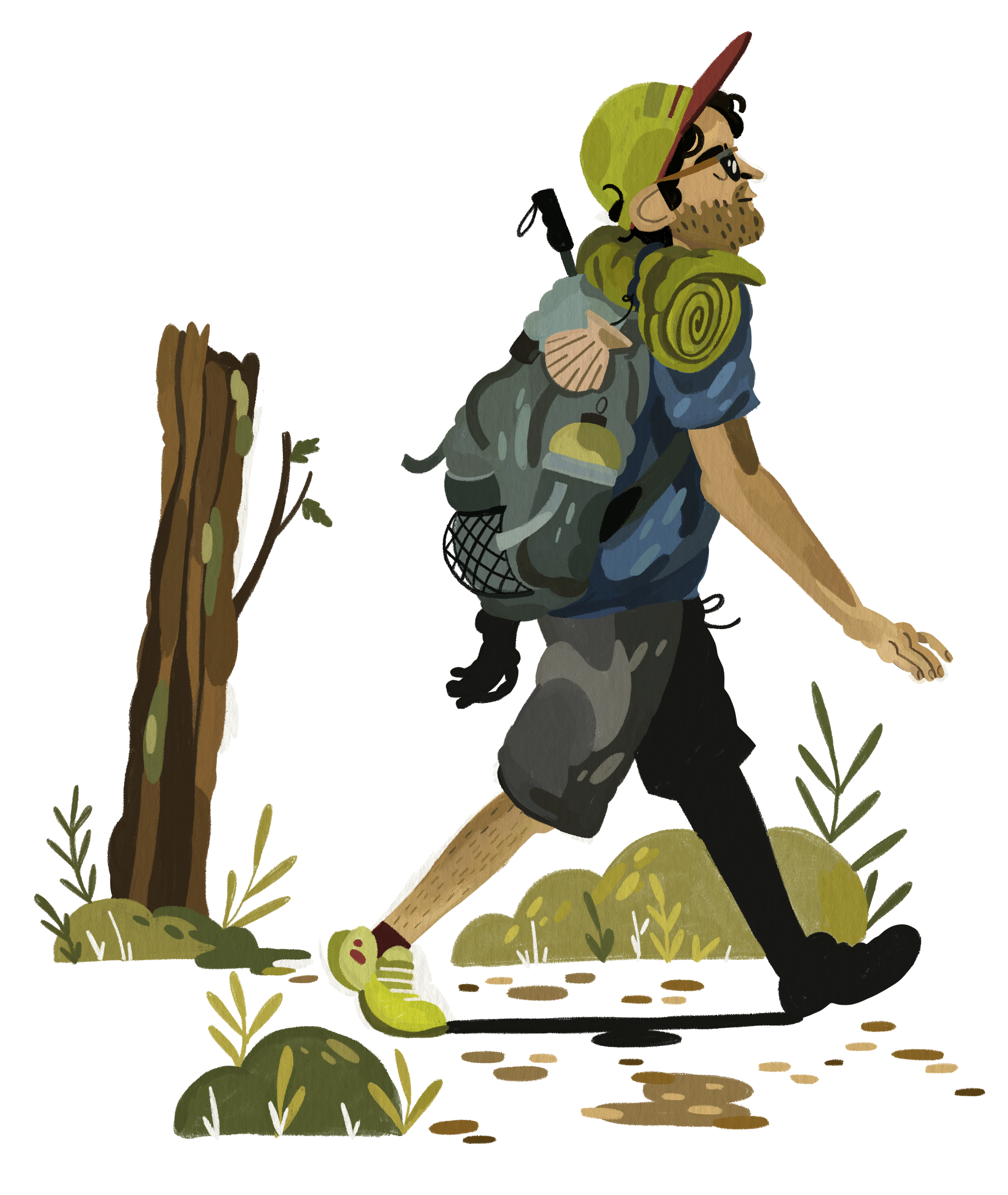

HOW TO GET TO FONSAGRADA
– Starting the Primitive Way in A Fonsagrada (an option chosen by some 800 pilgrims a year) is completely lacking in sense. Access to this town, the highest in Galicia at 1,012 metres above sea level, is an added complication. Remember to bring your pilgrim’s credentials with you.
-Apart from the taxi service, a bus from Lugo is the only public transport option. Since 1936 this service has been operated by the Her-Vei bus company. Four frequencies a day from Monday to Friday, and two at the weekends. The journey takes between 75 and 90 minutes and costs €9.
sections
a fonsagrada – lugo
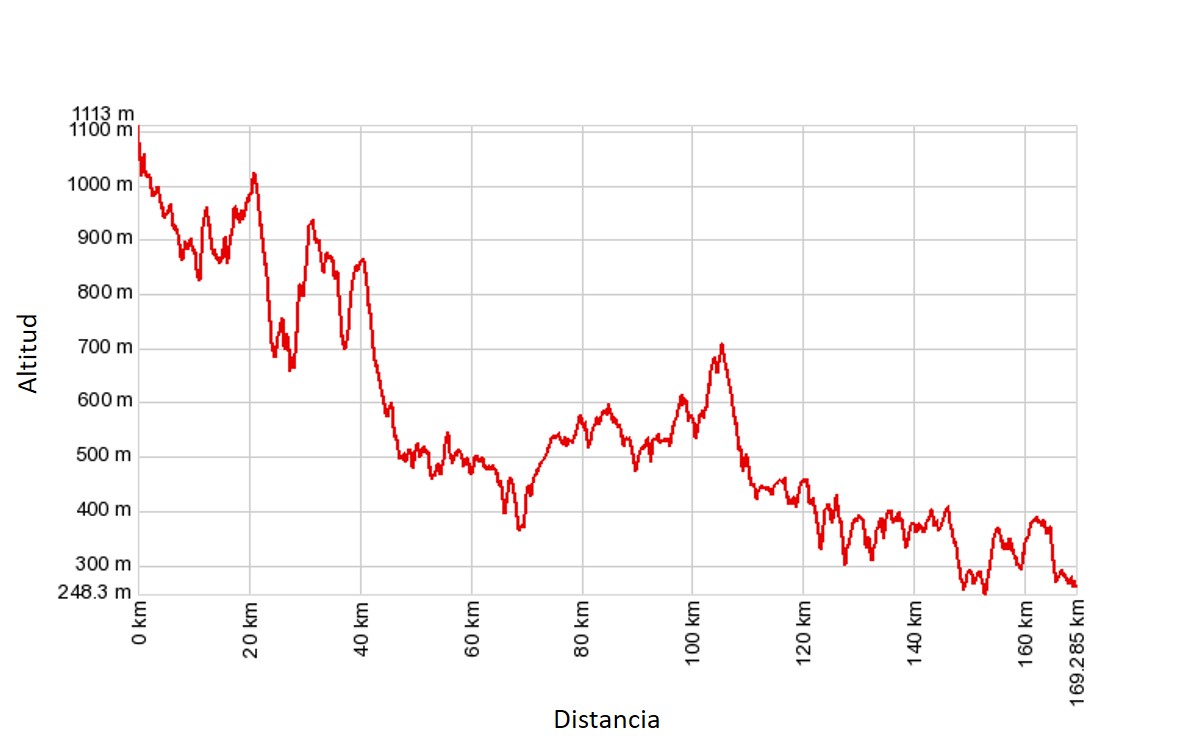



THE FONSAGRADA-LUGO STRETCH (54.25 km)
description
Although the most difficult terrain is now behind us, the gentle foothills of the Cantabrian Range still offer a mountainous landscape leading through a section of the Eo-Oscos-Terra do Burón Biosphere Reserve, included on the UNESCO list in 2007.


The Alto do Acebo viewpoint, at an altitude of 1,030 metres above sea level, marks the boundary between Asturias and Galicia. This area boasts vast expanses of pastureland, dotted with copses of deciduous trees and repopulated pine groves, taking us through the villages of Fonfría and Paradanova before coming to A Fonsagrada.
![]()
![]()
![]()
![]()
![]()
![]()
![]()
![]()
![]()
![]()
![]()
![]()
![]()
![]()
The Way will cross the LU 530 road until it begins the uphill climb to Montouto, in the Serra do Hospital hills, with an enchanting but steep downhill walk to Paradavella.
Another climb takes us to the top of Fontaneira (930 m), followed by the descent via Campo da Matanza, literally the ‘battlefield’, in memory of the armed combat that took place here between the troops of Alphonse II and the Saracens, as far as O Cádavo, which is normally the end of this stage.
After overcoming the final hurdle, the Serra da Vacariza (836 m) hills, there are two detours leading from Pradela: Vilaelle is the shortest of the two, leading to Castroverde, presided over by its medieval tower.
The route to Lugo is lined with chestnut and oak trees, as well as ancient tracks flanked by stone walls or verdant terrain.


![]()
![]()
![]()
![]()
![]()
![]()
![]()
![]()
![]()
![]()
![]()
![]()
![]()
![]()
Top of our to-do list during our time in the area known as A Terra Chá is a tour of Lugo, with more traces of the Roman Gallaecia than any other city. Access to the monumental zone is via the Gate of Saint Peter, whose only real value lay in assuaging travellers’ fears.
The true wall is your inner self. (Antoine de Saint-Exupéry, The Wisdom of the Sands)
Our suggestions
-When in A Fonsagrada remember to drink from the fountain the town is named after, and which stands at the start of the Way. After complying with this ritual, you are free to relax and enjoy a delicious serving of octopus paired with a glass of wine. If you have time to spare, visit the Ethnographic Museum, a worthy complement to the one you will have undoubtedly seen in Grandas de Salime.
-When contemplating the ruins of Montouto Hospital, remember that from 1357 onwards, this building provided shelter for the pilgrims that traced this route before you. Perched on the hilltop, it fulfilled the same functions as the ones in Santa Cristina de Somport, Roncesvalles or O Cebreiro, essentially to keep pilgrims on the signposted route in snowy weather and guide walkers with their bells. Long before the days of mobile phones and GPS!
-Although somewhat longer, we advise taking the Vilabade detour in order to walk down to Castroverde. It will take you past the Chapel of El Carmen and its delightful chestnut grove, ideal for taking a welcome rest, and shortly after the Palace of Archbishop Diego Osorio, Viceroy of Mexico, and the monumental Church of Santa María (built in the 15th and 16th centuries) with its Neo-Classical portico that provides shelter for all, nicknamed the ‘Cathedral of Castroverde’.
-After passing by Gondar quarry you will come across a grove of centuries-old chestnut trees, some of which look like human figures that could spring to life at any time. On misty days you could be forgiven for thinking that you are a character in the legendary tales by J.R.R. Tolkien, or films such as ‘A Monster Calls’ or ‘Pan’s Labyrinth’.
all about lugo
WHAT TO DO IN LUGO
description
Tours for travellers
-The Municipal Tourist Information Office is a good place to stamp your pilgrim’s passport and discover what to do and see in the city. Alternatively, stop off at the Primitive Way Interpretation and Visitors’ Centre. Two birds with one stone.
-In the Cathedral, which holds the ancient privilege of permanently displaying the Holy Sacrament, mass is celebrated at the following times. 9 a.m., 10.15 a.m., 11 a.m., 12 noon, 1 p.m. and 8 p.m. There is also a service at 7 p.m. on Sundays.
Not to be missed
–The Cathedral. Work on this building lasted from the 12th to 14th centuries, although the Neo-Classical façade was added in the 18th century. The North Door features an unusual coving capital depicting the Last Supper, in which some people have identified the figure of Mary Magdalene. Highlights of the interior (there is an admission fee of €3 for pilgrims, and a supplement applies to access the towers, cloister and museum) include the Baroque Chapel of Our Lady of the Large Eyes, a Gothic image of the Virgin Mary that in addition to the large eyes, also has goitre. The Diocese and Cathedral Museum is located in the triforium.
–The Wall. This Roman enclosure was built between the 3rd and 4th centuries CE, the finest example of its kind in existence and included on the UNESCO World Heritage list in the year 2000. The perimeter measuring an impressive 2,100 metres, with 72 towers (the only one that conserves the original openings is the Mosqueira Tower, close to the Gate of Saint Peter) and 10 gates, including the ancient Porta Miña, San Pedro (Saint Peter) or Santiago (Saint James), which are the ones included in the Way. Take a stroll along the wall, but rather than circling the entire wall, take the most attractive route that runs from the Cathedral and the Gate of Obispo Odoario (Bishop Odoario).
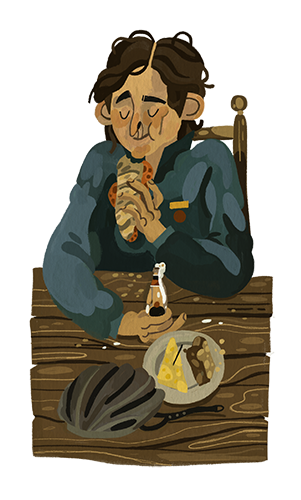

–Y para comer Lugo… If the countless traditional restaurants and taverns to be found in the city are anything to go by, this classic slogan which was used to promote the city – ‘And for lunch, Lugo’ – is perfectly valid even today. The city is renowned for its mouth-watering pork dishes and octopus.
Our suggestions
-Explore subterranean Lugo. Further traces of the Roman settlement appear every time the city streets are dug up. We particularly recommend two sites: the Mosaics House, situated at Rúa Dr. Castro 20-22, where a projection over the ruins recreates their original appearance; and the Domus of the Mithraeum, standing in the square overlooked by the Cathedral’s main façade, housing remains of the mithras temple and a villa with paintings.
-Explore the district of a Tinería, accessed from one of the Cathedral’s side doors. Up until just a few years ago, this was a marginal and somewhat rundown area, which has since received several awards for the magnificent renovation work.
-A visit to the eclectic Provincial Museum, housed in the former Convent of San Francsico, huddled around the Gothic cloister. In addition to the Roman archaeology collection, there are rooms housing religious art, Galician and Spanish paintings and sculptures from the 19th and 20th centuries, as well as collections of coins, medals, ceramics, clocks and fans, etc. A truly fascinating experience for visitors of all ages.
-A stroll around the Food Market and the Quiroga Ballesteros Municipal Market, ideal for shopping and getting a feel of life in the city. Open from 8 a.m. to 2.30 p.m. and from 5 p.m. to 8 p.m. from Monday to Friday and on Saturday mornings. Closed Sunday.
-It is common knowledge that Lugo is the best city in Galicia to go out for tapas, a custom that here is practically a religion. Most bars serve one or two tapas free of charge to accompany your drink. Rúa Nova and the area around Praza do Campo are the most traditional streets, but you’ll find bars and taverns on every corner. Ask the locals for their recommendations.
-If you’re tired of life within the city walls and are yearning for some country air, then take a stroll down to the Rato Riverside Walk, a 6 km route that takes in several mills, a basketmaking workshop and a nature interpretation and visitor centre.
lugo – melide




THE LUGO-MELIDE STRETCH (46.4 km)
description
Retracing the route of the Roman Via XIX, which led from Lucus to Iria Flavia and Braga, crossing the River Miño by the bridge which stands on the same site as the original, most of the way through the vast plateau of Lugo’s Terra Chá is tarmacked.
Small villages that are typical of inland Galicia and its declining population, with parish churches, although there are insufficient priests to attend them all, pepper our route through this area of transition.
Step by step, day by day, life treats you to its sweet monotony. Step by step, day by day, life dawdles sweetly by. (María José Hernández, El Mar del Deseo).
This seemingly endless landscape is broken by a path that leads us through a wood and past the Church of Bacurín, before returning to the road that will take us directly to San Romao da Retorta. Here there is another temple with Romanesque sections and a Neo-milestone. An oak grove situated 1 km outside the village marks the site of two hostels.
A forest track that traces a route reminiscent of a rollercoaster follows the ancient road, lined by eucalyptus trees that announce the transition to the western section. After passing through Burgo de Negral we come to Ponteferreira, with a humble Roman single arch bridge and various amenities for pilgrims.


The terrain remains unchanged, with a succession of earth tacks, as we approach the boundary of the province of Lugo, passing through As Seixas, with its two hostels, and Hospital das Seixas.
We make our way uphill to the Sierra do Careón hills, with an altitude of 798 metres and yet another windfarm standing between groves of autochthonous trees. In the province of A Coruña, slate gives way to granite and tile as the typical building materials.
A long but gentle descent takes us downhill, through Vilamor, to the River Furelos valley, which is also crossed by the French Way. Just behind the valley is Compostela, although the hopes of many will be dashed to learn that this is not the city, but rather a village of the same name.
Melide marks the end of this peaceful interlude, and we must adapt to the hustle and bustle of the ‘pilgrims’ highway’ that links Sarria with Santiago: the FRENCH WAY.
Our suggestions
-There are no major monuments between Lugo and Melide, and therefore the Church of San Miguel de Bacurín becomes a focal point of visitor attention. This 12th century temple is a fine example of rural Romanesque architecture, with its semi-circular apse and intriguing brackets decorated with animal heads and erotic scenes in allusion to the vices, and, albeit suitably camouflaged, a likely invitation to carpe diem shrouded in irony.
-Worthy of note is the San Romao da Retorta oak grove, a delightfully shady spot in which to enjoy a delicious outdoor meal.
-Nestling in a tiny, remote village, the As Seixas public hostel is housed in a charming rural building that has been renovated throughout. We recommend spending the night here (remember to take your own food), but if that is not in your plans, then at least take the time to stop and admire it. The manager, Marifé, is an authentic institution of the Primitive Way.
-Joining the French Way requires a change of mindset, even more so in the high season, when you are advised to book your accommodation in advance. Otherwise, you may end up walking further than you should or even spending the night under the stars – not such a bad thing if the weather is hot and it is not raining.
melide – santiago




THE MELIDE–SANTIAGO DE COMPOSTELA STRETCH (53.5km)
description
As soon as we leave Melide behind, we pass by the Romanesque church of Santa Maria (12th century), with its one nave and semi-circular apse. Inside, a medieval altar is preserved, as well as murals from the beginning of the 16th century representing the Trinity and the Tetramorphs.
![]()
![]()
![]()
![]()
![]()
![]()
![]()
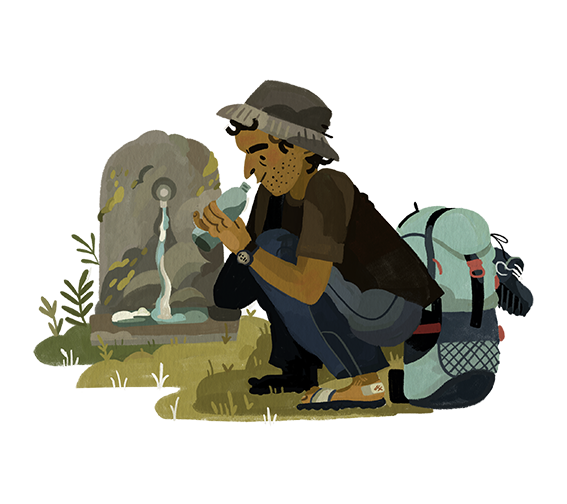

Once the Catasol stream has been crossed, the path goes up to Raído, and we go down again to Boente next to its fountain and church of Santiago. A steep drop takes us to the Boente River, and the roller coaster – which will definitely make you sweat – continues towards Castañeda. An extensive eucalyptus plantation separates this valley from the next, and all of them like transversal to the way.
![]()
![]()
![]()
![]()
![]()
![]()
![]()
On the banks of the Iso River, we meet again the pairing of bridge and hospital. The subsequent climb to Arzúa is hard. The village, modern and stretched out over the N-547, features a lively boulevard and the Gothic Madalena chapel (14th century). In Arzúa, the French Way meets the main branch of the NORTH WAY.
You have to continue along broken terrain to cross the As Barrosas stream, which is followed by a steep climb. Here, eucalyptus plantations coexist with cattle pastures, although there are usually oak trees along the way.
The toponyms associated with the path mark this route: Tabernavella, Calzada, Calle, A Brea, and A Rúa. In Salceda, you can see a simple monument memorialising the pilgrim Guillermo Watt, who died here in 1993; it is not the only one, as there are several on the French Way in recent years, which is a contrast with the anonymity of those who perished along the route in the past.
From O Empalme, a crossroads with bars and restaurants, you go down to Santa Irene, where the fountain and chapel are often ignored by pilgrims. A common final stage for making the final jump to Santiago is O Pedrouzo, the capital of the council of O Pino. It is another modern centre, full of hostels and pensions, grouped around the national road.



The last stages take us to Amenal, where the way up to Barreira Peak begins. A second business park was also planned here, as in Melide – it seems we do not learn from the mistakes of the past to protect the way! The route was covered by the airport of Lavacolla and passes under the access road.
In Lavacolla, pilgrims historically used to wash themselves in its modest stream before reaching Compostela. The last slope extends to Vilamaior. The way continues through a new eucalyptus plantation to San Marcos and its chapel and to Monte do Gozo. Finally, the pilgrims can see the cathedral towers and the final goal of the pilgrimage.
There is little to say about the entrance to Santiago, although the route is being improved for the holy year of 2021. In a way, at this point, the route is unimportant because what matters is about to appear. We will not get into details about the section between the San Lázaro quarter and the charming Rúa de San Pedro. This street leads to the old town through the Porta do Camiño. The Casas Reais, Praza de Cervantes and Acibechería leave you in front of the cathedral. You have arrived at Santiago de Compostela.
All good things come to an end. However, in this case, the short final stages will not seem twice as good, but rather frustrating as we have already reached the point of the pilgrimage. Some will be satisfied by meeting the goal itself, but to the most restless people, completing the pilgrimage will seem like only the beginning, possibly of a farewell.
We have forgotten that our only goal is to live and that life is what we do every day and at all hours of the day we achieve our real goal if we live. (Jean Giono)
Our suggestions
– Breathe deeply and hope that the section along the Catasol stream, an orchard of alders, oaks and birches, never ends. You will cross its rustic pontella (which can’t quite be classified as a bridge) in a scene that could be the dwelling place of nymphs.
– Visit the church of Santiago de Boente, with its popular and nice image of Santiago Peregrino (19th century). He will stay with you forever, because every pilgrim is given a holy card.
– Whether you stay there or not, try to stop at the public hostel in Ribadiso next to the medieval bridge with an arch. The restoration of the old buildings, which has been a hospital for pilgrims since the 13th century, has been a complete success on the part of the Xunta de Galicia’s government. The river serves as a natural swimming spot.
– In Arzúa be sure to try the local cow’s cheese. Protected under the designation of origin, Arzúa-Ulloa, with a soft texture and cylindrical, flattened form, it is, along with the tetilla cheese, the best-known cheese of Galicia. We advise you try the farmhouse kind made with raw milk, if possible. Enjoy!
– It’s shocking that today we don’t know for sure exactly where Monte do Gozo was. Of French origin (Montjoie), it is called Monxoi in Galician. In the past, it gave rise to many emotions. It was also witnessed crazy races to determine who would be the first to see the towers of the cathedral and be proclaimed by his companions ‘the king of the retinue’. It’s fine to settle for the sculptural monument in memory of John Paul II’s visit (1989) at the edge of the way, but from the neighbouring hill, decorated with the figures of ecstatic pilgrims, the experience is much more rewarding.
